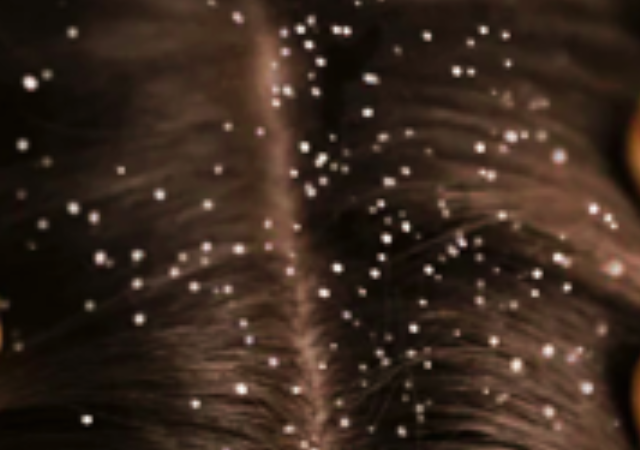Are You Making These Dandruff Mistakes? Learn the Real Cause Now!
Introduction
Are You Making These Dandruff Mistakes? If you’ve ever battled with the pesky white flakes on your shoulders or endured the itchiness that comes with dandruff, you’re not alone. Dandruff is a common scalp condition that affects millions worldwide, often causing frustration and embarrassment. But here’s the catch: many of us may unknowingly be exacerbating the problem by making some critical mistakes in our daily hair and skincare routines.
In this eye-opening exploration, we’ll peel back the layers of misconceptions and reveal the real causes behind dandruff. It’s not just about using the right shampoo or washing your hair more often. There’s a complex interplay of factors at play, from the microscopic world of scalp microbiomes to the impact of your diet and lifestyle choices.
So, get ready to embark on a journey to healthier, flake-free hair. By the end of this article, you’ll not only identify the common dandruff mistakes you might be making but also gain the knowledge needed to banish those flakes for good. Let’s dive in and uncover the secrets to a dandruff-free scalp!
The Dandruff Dilemma

Before we dive into the common mistakes that could be worsening your dandruff, let’s establish what dandruff actually is. Dandruff, scientifically known as “pityriasis capitis,” is a common scalp condition characterized by the shedding of dead skin cells in the form of white flakes. These flakes can be visible on your scalp and hair, and they often find their way onto your shoulders, leading to the classic “snowfall” effect.
The Common Dandruff Mistakes
Are you ready to confront the potential mistakes that could be contributing to your dandruff woes? Let’s explore the misconceptions and habits that might be making your scalp condition worse than it needs to be.
1. Using the Wrong Shampoo
One of the most common mistakes people make is using the wrong shampoo for their specific dandruff type. Dandruff can be broadly categorized into two types: dry dandruff and oily dandruff. Using the wrong shampoo can exacerbate your condition. Here’s what you need to know:
- Dry Dandruff: If your dandruff is more like powdery, dry flakes, you may have dry dandruff. Using an anti-dandruff shampoo formulated for dry scalp conditions can help alleviate this type of dandruff.
- Oily Dandruff: Oily dandruff is often accompanied by greasy, yellowish flakes. Using a shampoo designed to control excess oil and treat the underlying causes is essential for managing oily dandruff.
The mistake here is often reaching for a generic shampoo instead of one tailored to your specific dandruff type. Look for products with active ingredients like pyrithione zinc, selenium sulfide, or ketoconazole, as they can effectively address dandruff issues.
2. Infrequent Hair Washing
Contrary to popular belief, less frequent hair washing can actually worsen dandruff for some individuals. Infrequent washing can allow dead skin cells, oil, and sweat to accumulate on the scalp, creating an ideal environment for dandruff-causing microbes to thrive.
To avoid this mistake, find a balance that works for your hair and scalp type. If you have an oily scalp, more frequent washing may be necessary. However, don’t overdo it, as excessive washing can strip your scalp of natural oils, potentially aggravating the issue. For those with dry dandruff, less frequent washing might be appropriate, but be sure to use a moisturizing shampoo when you do.
3. Not Rinsing Shampoo Thoroughly
Another common mistake is not rinsing your shampoo thoroughly. Leaving shampoo residue on your scalp can irritate the skin and worsen dandruff. Ensure you rinse your hair and scalp completely after shampooing to prevent this issue.
4. Overusing Hair Products
Hair products like gels, mousses, and sprays can build up on your scalp and hair, potentially contributing to dandruff. This is especially true if the products contain oils or other ingredients that can clog pores or create an environment conducive to dandruff.
If you regularly use styling products, make sure to cleanse your hair thoroughly to remove any product residue. Opt for water-based or non-comedogenic products that won’t clog your scalp’s pores.
5. Ignoring Diet and Nutrition
Diet and nutrition play a more significant role in your scalp health than you might think. While dandruff isn’t solely caused by what you eat, certain dietary choices can exacerbate the condition. Here’s how:
- Sugar and Processed Foods: Excessive consumption of sugar and processed foods can promote inflammation throughout your body, including your scalp. Inflammation can worsen dandruff symptoms.
- Omega-3 Fatty Acids: A diet lacking in omega-3 fatty acids, found in foods like fatty fish, flaxseeds, and walnuts, may contribute to dry, flaky skin, potentially worsening dandruff.
- Probiotics: A healthy gut microbiome can positively impact the skin, including the scalp. Consuming probiotic-rich foods or supplements may help maintain a balanced microbiome.
6. Stress Management
Stress can trigger or exacerbate various skin conditions, including dandruff. When you’re stressed, your body produces more cortisol, which can lead to increased oil production on your scalp. This excess oil can contribute to dandruff.
To combat this mistake, practice stress-reduction techniques like meditation, yoga, or regular exercise. These activities can help regulate cortisol levels and promote a healthier scalp.
7. Not Seeking Professional Help When Needed
If you’ve tried over-the-counter anti-dandruff shampoos and home remedies without success, it’s crucial not to make the mistake of ignoring the problem. Persistent or severe dandruff could be a sign of an underlying medical condition such as psoriasis, eczema, or a fungal infection. Consulting a dermatologist can help you identify and address these issues effectively.
The Real Causes of Dandruff
Now that we’ve discussed the common mistakes people make regarding dandruff, let’s explore the real causes behind this scalp condition. Dandruff isn’t a one-size-fits-all problem, and its origins can be quite complex.
1. Scalp Microbiome
Your scalp, like the rest of your skin, is home to a diverse community of microorganisms, collectively known as the microbiome. Among these microorganisms, a type of yeast called Malassezia is often associated with dandruff. Malassezia yeast feeds on the oils produced by your hair follicles, and when it proliferates excessively, it can irritate the scalp, leading to dandruff symptoms.
2. Sebum Production
Sebum, an oily substance produced by your sebaceous glands, plays a crucial role in maintaining scalp health. However, when your scalp produces too much sebum or it becomes imbalanced, it can create an environment that fosters dandruff development. Oily dandruff is often accompanied by greasy flakes and a persistent itch.
3. Dry Scalp
On the flip side, a dry scalp can also contribute to dandruff. When your scalp lacks sufficient moisture, it can become dry and flaky, leading to the characteristic white flakes of dandruff. This type of dandruff is often associated with itching.
4. Skin Conditions
Dandruff can sometimes be a symptom of an underlying skin condition, such as psoriasis or eczema. These conditions can disrupt the normal skin cell renewal process, leading to the accumulation of dead skin cells on the scalp’s surface.
5. Genetics
Genetics can also play a role in dandruff susceptibility. If your parents or close relatives have a history of dandruff, you may be more likely to experience it yourself.
6. Hormonal Changes
Hormonal fluctuations, such as those that occur during puberty or pregnancy, can influence sebum production and, in turn, trigger or worsen dandruff.
Conclusion
Dandruff is a common scalp condition that affects people of all ages and backgrounds. While it can be frustrating and embarrassing, the good news is that it’s manageable. By understanding the real causes of dandruff and avoiding common mistakes, you can take proactive steps to keep your scalp healthy and dandruff-free.
Remember that dandruff isn’t solely a result of poor hygiene or using the wrong shampoo. It’s a multifaceted issue influenced by factors like scalp microbiomes, sebum production, skin conditions, genetics, and hormonal changes. By addressing these factors and making informed choices about your hair care routine, diet, and stress management, you can effectively manage and even prevent dandruff.
If you find that your dandruff persists despite your efforts, don’t hesitate to seek professional help from a dermatologist. They can provide a tailored treatment plan to address your specific scalp condition and help you achieve the dandruff-free, healthy hair you deserve.

My name is Rohit Vagh and I’m a content writer specializing in fashion and lifestyle. I have three years of experience in this field and have written various articles. My writing style is creative and engaging, and I strive to create content that resonates with my readers. I have a deep passion for fashion and am constantly researching the latest trends and styles to make sure my readers are up to date. I’m excited to continue my career in blogging, and I’m always looking for new opportunities in the fashion and lifestyle space.





